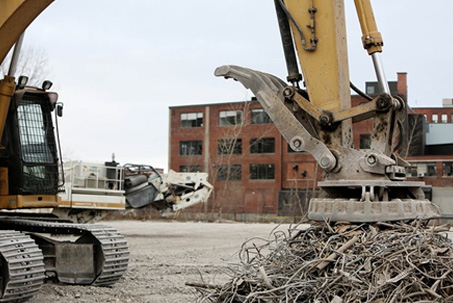
One very effective technique that almost all big scrapyards use is magnetization. By holding up a powerful magnet above junk, iron-containing or “ferrous” metals can be extracted, leaving behind “non-ferrous” metals, such as copper, brass, and bronze. Of course, plastic items won’t be magnetized as well but they are easy to identify and separate.
How Magnetism Works
Humans have known about magnetism for thousands of years, and our understanding of it has given way to various forms of technology that support some of the most important industries of our time. Because the forces at work in magnetism are invisible, it can easily be mistaken for magic or supernatural occurrence. Unsurprisingly, a lot of magic tricks involve the use of magnetism due to its physics-defying features.Disappointingly for the superstitious, magnetism is pure science.
The best way to understand how magnetism works is by looking through the electron microscope and study the motion of electrons. An atom consists mainly of three types of elementary particles—protons and neutrons, which comprise the nucleus, and electrons, which orbit the nucleus and fill the atom’s orbitals.
Electrons normally come in pairs, both of which spin but in opposite directions. Electrons spin and movement across the atom’s orbital creates a magnetic field. Because a pair of electrons spin in opposite directions, they cancel each other out, eliminating their magnetic capability. Some atoms, however, have unpaired electrons that share the same orbitals. These electrons spin in the same direction, creating a force that either attracts or repels other atoms with unpaired electrons.
Types of Magnetism
Because a lot of different things can happen to the electrons of an atom when exposed to external forces, magnetism may occur in different ways as well. Here are some of the common types of magnetism that you may encounter when trying to magnetize different types of materials.
-
Diamagnetism
– All materials have a natural tendency to oppose an applied magnetic field, except those that possess paramagnetic properties. This reaction to external magnetization is called diamagnetism.
-
Paramagnetism
– Some materials have a tendency to enhance an external magnetic field and in the process cancel out their diamagnetic reaction. Each of their atoms have one unpaired electron that is free to align its magnetic moment in any direction where an applied magnetic field exists.
-
Ferromagnetism
– Like paramagnetic materials, ferromagnetic materials have unpaired electrons on their orbitals. The only difference is that the intrinsic magnetic moment of these unpaired electrons also have the tendency to orient parallel to each other to maintain a low-energy state, allowing them to maintain magnetic force even in the absence of an applied field.
-
Antiferromagnetism
– Obviously, this is the opposite of ferromagnetism. The intrinsic magnetic moment of the unpaired electrons tends to orient opposite each other instead of parallel to each other. As a result, they don’t create their own magnetic field and are completely reliant on applied field to generate magnetic attraction.
-
Ferrimagnetism
– Some materials have qualities of both a ferromagnet (retaining magnetization in the absence of a magnetic field) and an antiferromagnet (sometimes rely on external magnetization). Magnetite, the first discovered magnetic substance and was originally believed to be a ferromagnet, is actually a ferrite.
Types of Magnet
Now that we understand how magnetism works on a subatomic level, we can conclude that some metals are naturally magnetic and that the magnetic properties of certain metals can be manipulated. This means not all metals are magnetic but can be alloyed with other metals to become one. Magnetic metals can be classified into three types:
-
Temporary Magnets
– These are metals that become magnetized when exposed to a magnetic field and lose their magnetism when the magnetic field is removed.
-
Permanent Magnets
– Some metals have natural magnetic properties. They can attract metals that exhibit the same type of magnetism as they do. Best examples include alnico (an alloy of aluminum, nickel, and cobalt) and ferrites (iron oxides combined with nickel, strontium, or cobalt).
-
Electromagnets
– When you run an electrical current through a coil with a metal core, such as copper, you create a magnetic field, which disappears when the current is shut off.
Meanwhile, there are numerous applications involving the use of metal where magnetism isn’t necessary. Therefore, it is crucial to identify not just metals that can be magnetized, but also metals not attracted to magnets. Some of the most common types of metal attracted to magnets include iron, cobalt, nickel, and some alloys of rare earth metals.
Best examples of non-magnetic metals include copper and its alloys, such as bronze and brass. In fact, they are segregated from scrap by using magnetism to extract magnetic metals like iron mixed with them. Then again, copper is also a kind of metal used in magnets, particularly in electromagnets, due to its high electrical conductivity.
If you are planning to use metals in your project, it’s important to take note of what metals are magnetic and what are not. To be absolutely sure that you are picking the right materials, consult with experts like Rotax Metals. They can give you advice not only on the most ideal type of metal to use but also the exact grade and thickness.
Sources:
https://learning-center.homesciencetools.com/article/magnet-types-science-lesson/
https://science.howstuffworks.com/magnet.htm

